Though this is titled late winter, it did not feel like winter on this walk. The air temperature was 75°F. There was a blanket of fog over the beach, and it felt slightly humid and sticky, but with a cooler feel than we have in summer. It is true that Punxsutawney Phil did not see his shadow this year – signaling an early spring, and the weather today supported this, but spring does not officially begin until the equinox on March 21. So, this is a late winter walk.
This walk was near Big Sabine on Pensacola Beach. As I crossed the road at Park East and headed into the dunes there was a breeze from the south creating surf that could be heard across the island. The fog made things damp and chilled. And there was no sign of wildlife anywhere. The numerous songbirds I had encountered during early and mid-winter were gone. There were flowers in bloom but no insects pollinating them. Literally no wildlife was to be seen.
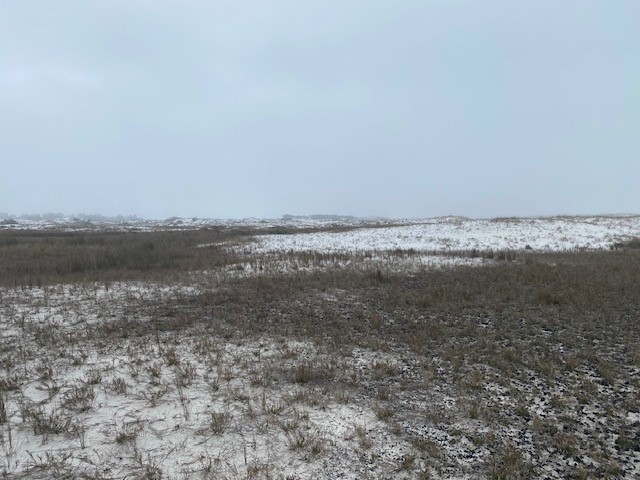
So, I turned my focus to the environment, noticing plants and the stages they were in. As you move from the primary dunes of the Gulf side into the more shrub covered secondary dunes, you cross through low areas in the dune field called swales. Here water collects during rain events forming ephemeral ponds and the plants associated with this habitat are more wetland than upland. In the boggy portions of the swale, I found sundews large and in a brilliant red color. These carnivorous plants produce tiny droplets of sugar water on threads at the tips of their leaves that attract the pollinators of the beach. Though sweet and delicious, they are also sticky and trap unaware insects which become a meal for them. Along with the sundew were numerous strands of ground pine, another carnivorous plant of the swale.
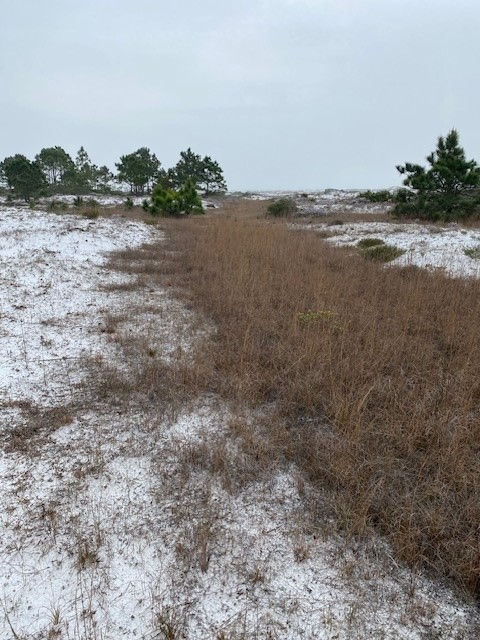
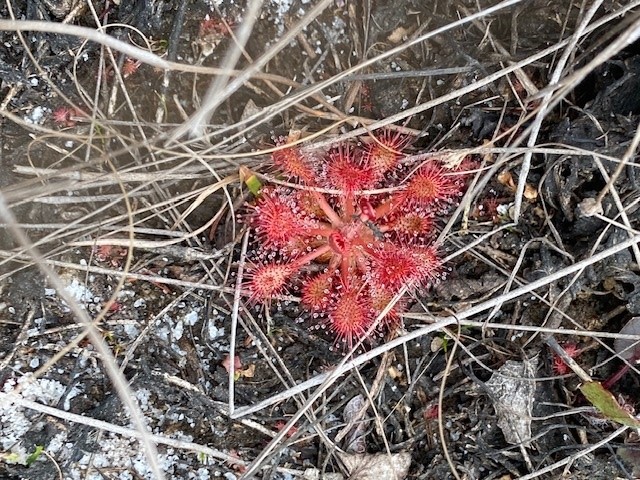
Beyond the swale, the secondary dunes were a blanket of lavender. The false rosemary, also called beach heather (Conradina), was in full bloom everywhere. As I walked through the dunes of flowers I came across the signs of wildlife. Armadillo dens were quite common. There were tracks of animals, including the raccoon, and scat was found. The scat contained seeds and, unlike the long-tapered shape of most carnivore scat, was blunt and rectangular shaped – suggesting a herbivore or omnivore. I did encounter a couple of ephemeral ponds with very little water, but there were no animals, or animal sign, to be found there.
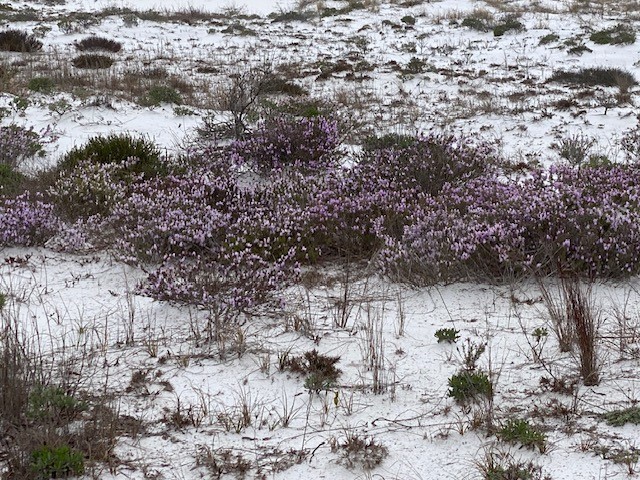
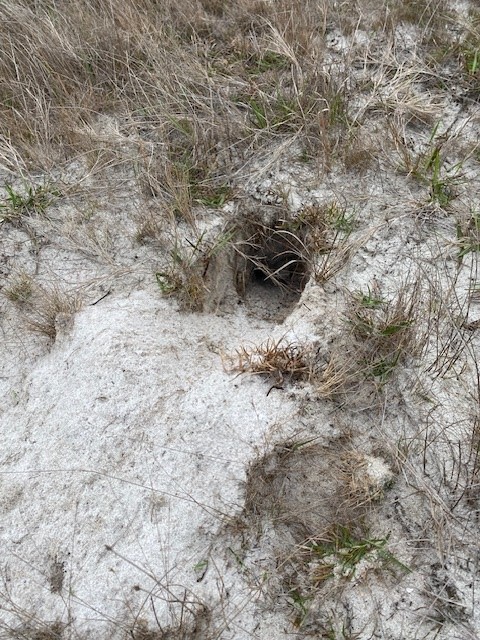
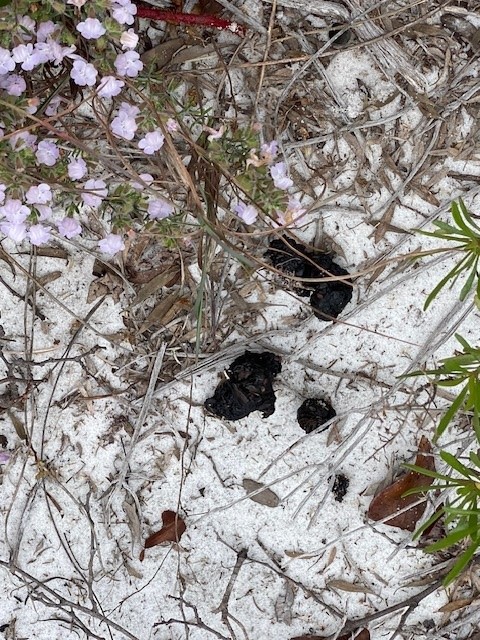
As you move from the secondary dunes into the maritime forest you pick up a section of the Florida Trail. This 1,500-mile trail begins at Ft. Pickens on the western end of Santa Rosa Island and ends near the Everglades. It was obvious that many of the animals who live in these dunes use this trail as well, there were numerous tracks covering it. Over the ridge into the maritime forest, you encounter marshes. The plants you find growing there help indicate whether the marsh is fresh or salt water. Pausing here to see if something stirred or moved, I saw and heard nothing and continued on.
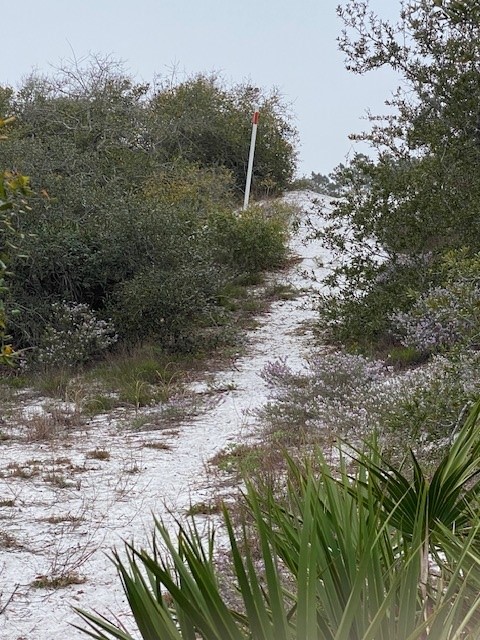
The maritime forest was full of healthy pine and oak trees, creating a completely different habitat for the wildlife out here. You get the feeling when you enter the forest that this is where the creatures prefer to be. Raccoons, skunks, coyote, snakes, birds, lizards, exist here and I was hoping to find something. And then it happened. Glancing up into one of the pine trees I saw a great horned owl – bingo! These are amazing birds and there have been a few reports of nesting great horned owls around the area. I did not see the nest but was happy to see the owl.
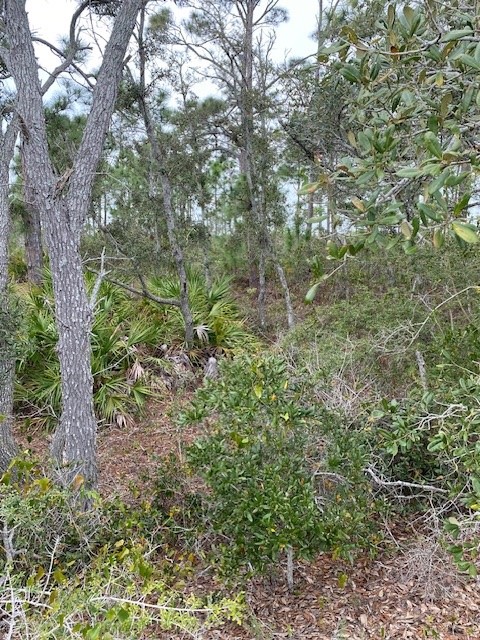
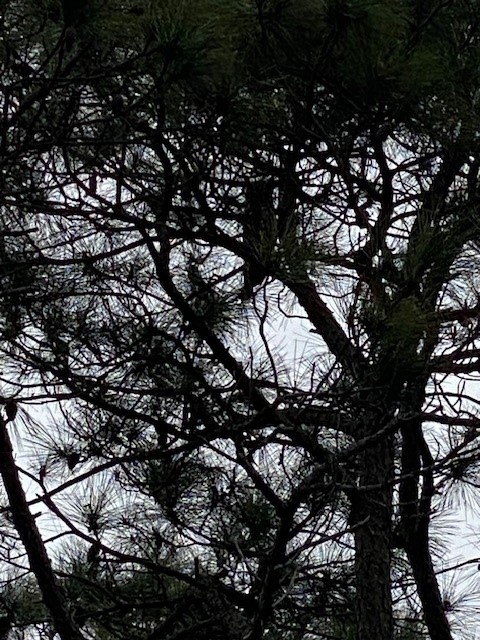
I eventually reached the shore of Santa Rosa Sound and walked along for half a mile or so. I did see a great blue heron in the marsh, and some wharf crabs under a plank of wood – but there was nothing visible in the clear water of the Sound. There was evidence of armadillos digging. One section of the beach they had basically destroyed digging for grubs and other invertebrates to eat.
All in all, it was a quiet day. I am guessing that the foggy conditions moved the animals into their hiding places waiting for the sun to come out. Our next walk will be in early spring, and we are hoping to see more wildlife.
You should get out and take a hike on our beaches, there are plenty of cool things to see and it’s great for your mind.
- Tips for Bear Encounters this Fall - November 10, 2025
- Pensacola Bay Invasive Species Summer Survey 2025 - November 3, 2025
- Our Environment: Part 24 – Our Changing Climate - November 3, 2025
